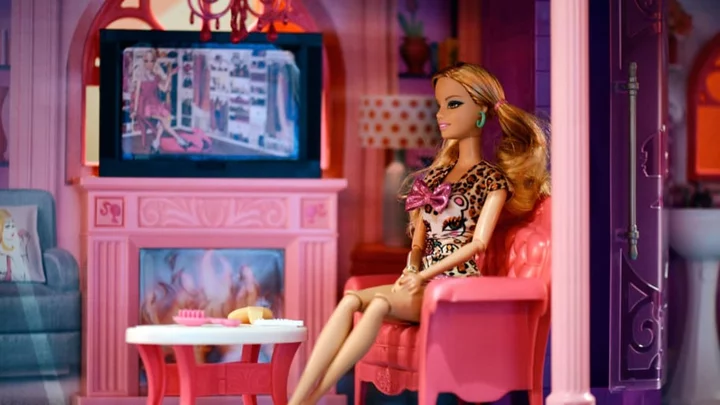For a few lean years, Barbie had to live out of a suitcase.
Mattel’s signature product, a fashion doll with an opulent lifestyle, is like the toy industry’s version of the disposable razor: Get consumers to buy the handle, then hope they’ll keep buying the blades. In Barbie’s case, it’s about her material possessions. (“A Barbie Doll, for you lucky people who don’t have daughters, is a $3 doll that requires $1200 worth of clothes to be dressed properly,” wrote columnist Art Buchwald in 1963.)
It’s not just apparel but a ceaseless stream of accessories, from cars to pets to boyfriends. Her most affluent fans can house her in the Barbie Dreamhouse, a prized piece of real estate that gives Barbie space to relax, hang out with her friends, and ignore the fact she only has three walls and therefore no privacy.
But those prosperous years came later. When the doll debuted in 1959, she had nowhere to live at all aside from a child’s drawer, shoebox, or closet.
Home Improvement
Everything changed in 1962, when Mattel introduced her Dreamhouse. Retailing for $4.88 (or roughly $50 today), the living space was made of cardboard and collapsed into a carrying case for easy toting. When opened, it featured some furniture, a bed, a television, bookshelves, and closet space, which contained plastic hangers.
It was less a dream home than a dream apartment—or even a dorm room, as author and design expert Felix Burrichter once speculated. After all, the pad had varsity pennants hanging on the walls. If it were indeed a home, it would be a very feminist statement for Barbie: At the time, it was rare for banks to approve a woman’s application for a mortgage without a spouse co-signing.
Business was good for Barbie, and apparently Mattel was giving her a share of the profits. Another Dreamhouse hit the market in 1964, this one with a kitchenette—no more takeout for Barbie—and a sliding patio door. The following year, Barbie upgraded to a $9.99 plastic domicile (worth about $100 today) that was available as a Sears store exclusive. (Fitting, as that once-vaunted department store brand previously sold actual ready-to-assemble houses for humans via mail order.)
In 1974, the doll moved to a townhouse that offered more vertical living space as well as a kitchen and even an elevator. Five years later, she moved again, this time to an A-frame. That model was repainted in 1986 to give it a full Barbie pink aesthetic, which wouldn’t likely fly with any homeowner’s association. But Barbie and her Dreamhouse would soon have a more controversial matter to attend to.
Barbie Relocates
Barbie’s various home renovations lacked one crucial detail: Making her palatial surroundings accessible to all. That became a glaring omission in 1997, when Barbie’s new friend, Becky, arrived on the scene in a wheelchair. The doll and her chair were unable to fit in the Dreamhouse elevator or through its front doors.
The gaffe prompted a minor stir and forced Mattel to plot a redesign, though they pointed out Barbie’s other properties—the Barbie Traveling House and Barbie Folding Pretty House—were compatible.
More pink and Becky-friendly homes followed, many in the modern style, though Barbie would also find herself inhabiting a Victorian. (Often, her Dreamhouses are reflective of the architectural tastes of the era.) And while Mattel and Warner Bros. are promoting their upcoming Barbie movie with a Dreamhouse Airbnb, the property was first introduced as a real place to visit in 2013.
Barbie: The Dreamhouse Experience was located at the Sawgrass Mills Mall in Sunrise, Florida, and featured 10,000 square feet of everything a Barbie fan could possibly need or want, from makeovers to doll displays to a somewhat puzzling dolphin jumping out of a toilet. A second, Mattel-approved Dreamhouse “toured” Europe after debuting in Berlin.
The houses tied in to Mattel’s audacious marketing stunt: Barbie selling her Malibu home. The asking price: $25 million. After “touring” the U.S. to find a new place to settle down, Barbie returned to California and settled into a redesigned Dreamhouse, this one with two elevators and a canopy bed.
She’s since made new memories in other accommodations. The latest Dreamhouse stands 43 inches tall and comes complete with pool slide, barbecue grill, and bunk beds. But the ultimate amenity was 50 years in the making: It wasn’t until 2008 that her Dreamhouse came with a flushing toilet.
This article was originally published on www.mentalfloss.com as Think Pink: How Mattel Built Barbie’s Dreamhouse.

